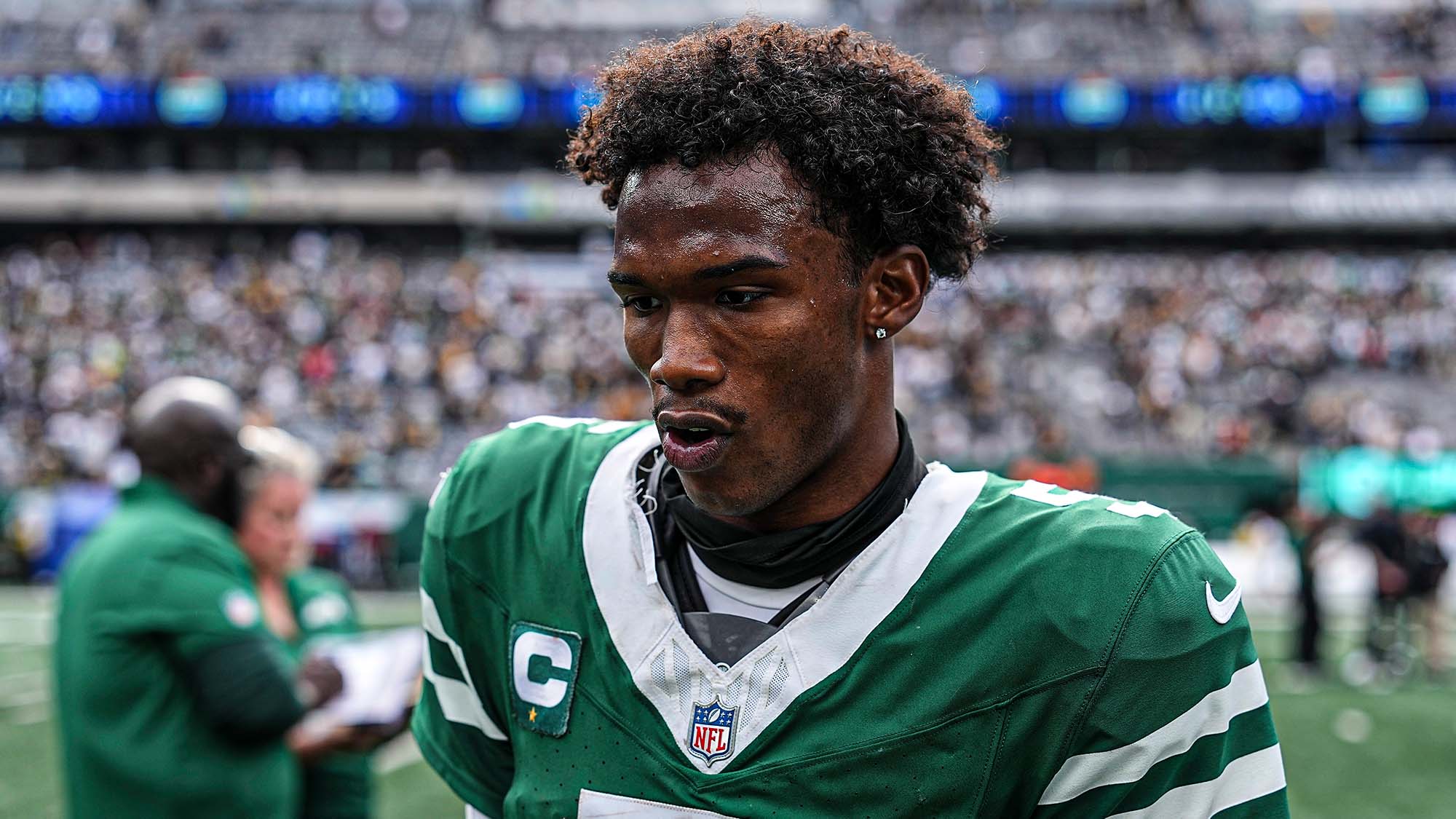Garrett Wilson’s short NFL career has been defined by a consistent theme: untapped potential.
Wilson has hardly been unproductive at the professional ranks. He began his career with three consecutive seasons of 1,000 receiving yards, earning him a four-year, $130 million contract extension.
However, the eye test shows a player whose numbers should be much gaudier than they are.
In 53 career games, Wilson has only scored 15 touchdowns. This places him 31st among all players since 2022. Wilson is tied with players like tight end Juwan Johnson and wide receiver Nick Westbrook-Ikhine.
And while the “three consecutive 1,000-yard seasons” stat rolls off the tongue, it means less in the 17-game era. Wilson is averaging 64 receiving yards per game in his career, ranking 26th among players with at least 15 games played since 2022. He ranks behind players like Ladd McConkey, the aging versions of Amari Cooper and Cooper Kupp, and his former Ohio State teammate, Chris Olave.
Anybody who has watched Wilson play football knows his talent exceeds these numbers. Unfortunately, poor quarterback play has held Wilson back from pushing his numbers to superstar levels.
The grim reality for Wilson? Things may not be changing anytime soon.
One glaring metric proves it.
According to this graph from xEP Analytics, Wilson leads qualified players in “average separation created” through the first two weeks of the 2025 NFL season.
Yet, despite creating the best separation in the NFL, Wilson currently ranks 17th in receiving yards (145). He has only scored one touchdown, while 16 other players have already caught multiple touchdowns.
We’re only two games in, but for the fourth year in a row, Wilson’s eye test is on track to exceed his production. And, once again, it comes down to poor quarterback play.
Is Justin Fields holding back Garrett Wilson?
The reunion between Wilson and Justin Fields was appealing for multiple reasons. Whether it was their history together at Ohio State, Fields’ success targeting No. 1 receivers in the NFL, or Fields’ deep ball, there were (and still are) reasons to believe Fields is the right quarterback to help Wilson hit his statistical ceiling.
However, Fields hung Wilson out to dry in the Jets’ Week 2 loss to Buffalo. Fields’ misses in this game are the primary source of the disconnect between Wilson’s league-best separation rating and 17th-ranked yardage total.
On New York’s first drive of the game, Fields badly missed an open Wilson on a third-down in-breaker that would have netted at least 20 yards and a first down to extend the drive.
Fields later hit Wilson on a similar throw for 18 yards, but Fields threw the ball behind Wilson, forcing him to break his stride. This may have cost Wilson a chance to make a big play after the catch.
This is a ball Wilson should certainly still catch. That is indisputable. However, Fields makes things unnecessarily difficult by throwing behind Wilson on an uncontested drag route with no pressure in the pocket. It can also be argued that Fields throws this too hard for such a short, simple throw, which is an issue he tends to have. He can lack touch and general “catchability” on his passes.
Garrett Wilson’s grim reality
There is plenty of football left to be played in 2025, but Sunday’s loss was a reminder that Fields is an unreliable NFL starter until he proves he can consistently perform at a competent level. While he is capable of standout performances like his season opener against Pittsburgh, he remains just as capable of stinkers like his 3-of-11 performance against Buffalo.
For that reason, Wilson may be doomed for another season of numbers that fall short of his potential.
Wilson has had plenty of shining performances in his career. When his quarterback is thriving, he delivers strong numbers, as we saw in Week 1.
But to put up numbers at the caliber of stars like Justin Jefferson and Ja’Marr Chase, you must be productive nearly every week, which typically requires competency at the quarterback position. Because of quarterback performances like Fields’ in Week 2, Wilson has had too many quiet statistical outputs to put up season-long numbers anywhere close to what we have seen from Jefferson and Chase, who have typically enjoyed solid quarterback play.
Take away their solid quarterback play, and Jefferson and Chase’s numbers could look just like Wilson’s. Jefferson is experiencing this at the moment. He has only posted seven catches for 125 yards and a touchdown across two games with a struggling quasi-rookie in J.J. McCarthy.
Or, look back at Ja’Marr Chase’s 2023 season. After averaging 83.3 yards per game across 10 games with Joe Burrow at quarterback, Chase dropped to 63.8 yards per game across six games with Jake Browning as the starter – nearly the same as Wilson’s career average (64.0 yards per game). With Burrow out for the foreseeable future, we shall see how Chase’s numbers change.
New York’s quarterbacks – whether it’s Fields or Tyrod Taylor – still have plenty of time to turn around their play and help Wilson achieve a career year in 2025. However, based on the career track records of both quarterbacks, there is a pretty good chance that Wilson’s final stats in 2025 will look similar to the past three years.
Wilson will likely have dominant performances here and there, but until Fields curbs his accuracy woes, Wilson will be hamstrung by occasional down games in the box score. It’s a frustrating reality for an uber-talented wideout whose underlying metrics suggest he is in the conversation for best separator in the NFL.

